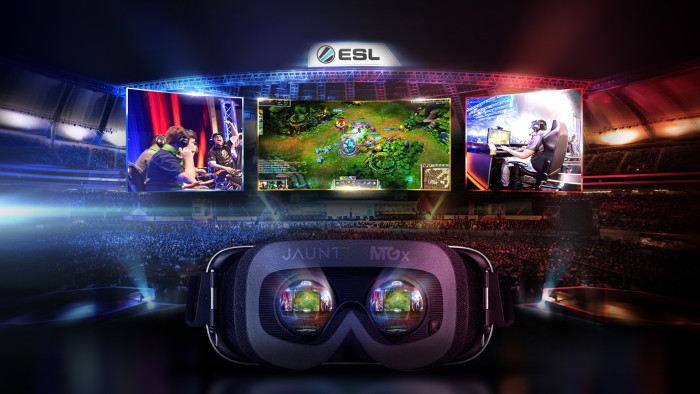Virtual reality was a big theme at this year’s Game Developer’s Conference, and it will get a strong focus next week at E3, but Wedbush Securities’ analyst Michael Pachter believes it’ll be a while for the technology to be fully adopted by the public. Nevertheless, it will eventually become quite profitable to game publishers–perhaps even more so than eSports, he stated in an interview with GamesIndustry International.
“We expect VR HMDs to sell fewer than 5 million units in 2016, and expect to see that sales figure double in 2017 and to double again in 2018. Once the installed base of HMDs has reached 20 million or so, it is possible that one or more of our covered publishers will begin to monetize its IP and to generate profits from virtual reality,” Pachter explained. He feels that VR will take about three to five years to get up to speed on success, according to the report.
“ESports is also a 2016 event, but the path to revenue and profitability is probably farther off than it is for virtual reality,” he noted. “We expect the publishers to take baby steps with eSports, investing modest sums sponsoring and promoting tournaments, as each endeavors to find the right balance of opportunity. Over the next 5-10 years, we think that eSports can generate eyeballs and revenues that are on par with established sports such as NBA basketball or Major League Baseball.” He did make note, that the eSports angle is only for particular publishers, and that it continues to be a strong revenue generator worldwide.
However, the fascinating thing about eSports, according to Pachter, is the different approaches by publishers. The most prominent example is Activision acquiring Major League Gaming, while EA is looking “at eSports as an opportunity to drive interest in its games, similar to the way that AYSO soccer drivers purchases of athletic shoes and uniforms.
“On balance, we favor EA’s approach, as we believe it is a more realistic, albeit less lucrative, near-term opportunity. We think that by sponsoring tournaments, EA can create a pyramid of different skill levels, with entry-level players at the bottom of the pyramid and professional players at the top. This is analogous to soccer, with hundreds of millions playing in youth soccer leagues and only several hundred players playing professionally. As players progress to higher levels in the pyramid, EA is making a bet that they will be more active players of the underlying eSports game, and will spend ever-increasing amounts for the game itself, on downloadable content for the game, and on microtransactions that will enhance their gaming experience,” Pachter added.
“Activision’s approach, on the other hand, appears to rely upon its ability to generate fan and viewing interest in tournaments based on its popular Call of Duty, StarCraft II, Hearthstone, Heroes of the Storm and recently released Overwatch brands. We think that the company’s desire to be ‘the ESPN of eSports’ is misguided; in our view, if anyone will be the ESPN of eSports, it’s likely to be ESPN itself. It is important to note that neither FIFA nor the NFL, owners of the two most watched televised sports in existence, generate significant revenues from their proprietary broadcasts of their respective sports on their own television networks. Instead, the sports leagues generate the bulk of their television revenues from licensing the rights to broadcast to the various broadcast networks.”

